The open-air gardens are a great venue for a walk in the current situation – but a mask is required per social distancing rules. The even more cautious can join PestBuda on a virtual walk. On the side of Várhegy sloping towards the Danube, the beautiful Várkert Bazár (Castle Garden Bazaar) complex unfolds from afar and stretches along the riverbank, fitting harmoniously into its surroundings. The Neo-Renaissance building complex, built between 1874 and 1882, was designed by Miklós Ybl. The elegant gardens hide many interesting stories.

Mikós Ybl fitted the Bazaar into its surroundings as if it had always stood in its place (Photo: Balázs Both/pestbuda.hu)
The complex was created to beautify the Royal Palace's surroundings, as the former buildings on the site “showed their unpainted back walls, smoky chimneys and attics to the windows of the princely residence,” as Vasárnapi Újság wrote in its 21 December 1897 issue. The Castle Garden Bazaar was built on expropriated plots, and served as a forerunner to the modern royal gardens, and closed off the eastern end of the Royal Palace of Buda Castle, connecting it to the embankment on the riverbank.
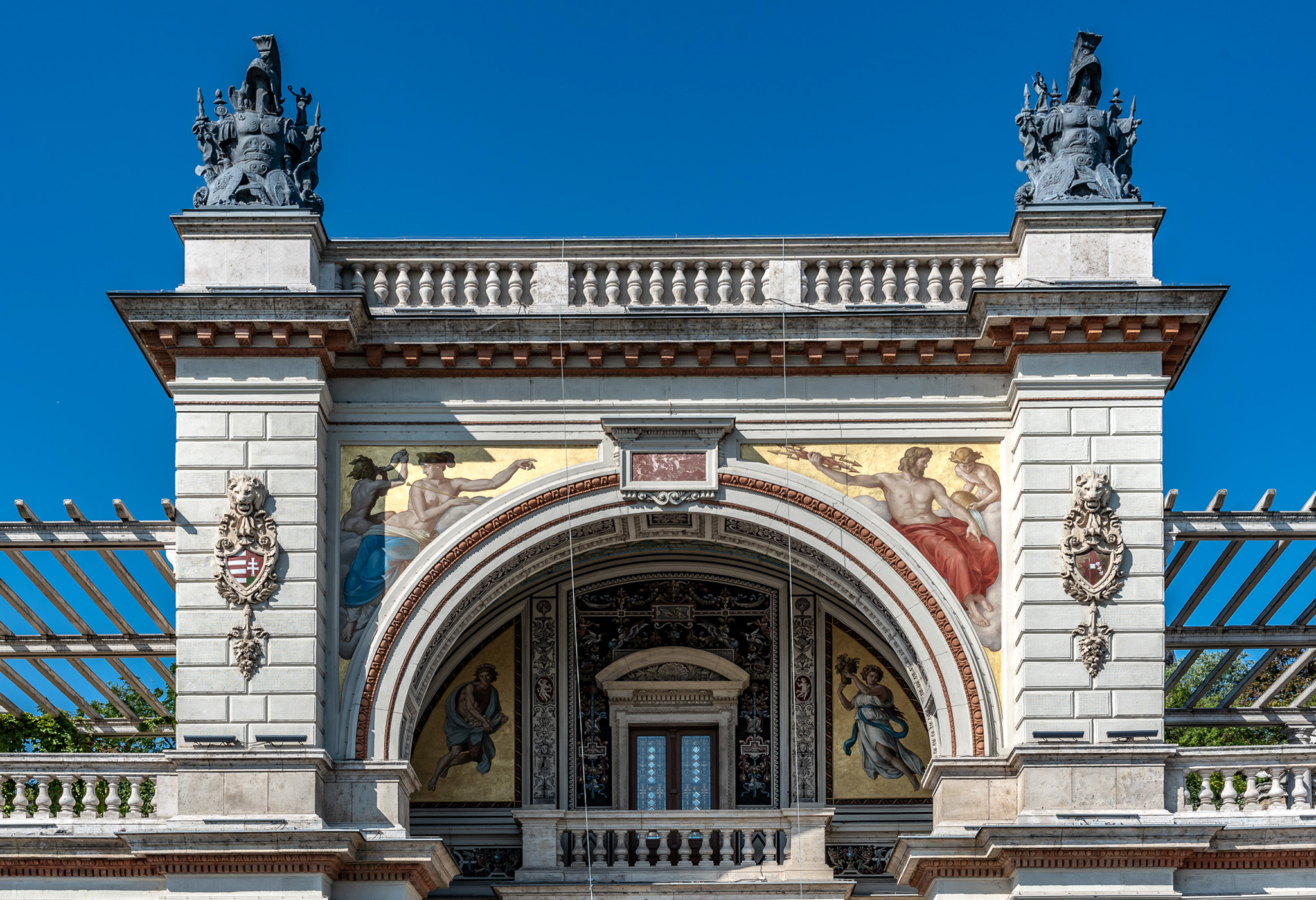
The spiral staircase in the stair pavilion offers an enchanting entrance to the garden (Photo: Balázs Both/pestbuda.hu)
One of the main attractions and the central element of the building complex is the 8,000 square metres Neo-Renaissance garden, which can easily be reached from Ybl Miklós Square. Most people choose one of the two ramps that begin in a two-storey, domed middle building. To the north, the stair pavilion's spiral staircase also offers an exciting entry point. The stairs lead straight to the castle's mediaeval curtain wall and the Vízhordó ('water-bearer') stairs.
This structure, as Borbála Czakó, a walking guide of Várkapitányság, told Pestbuda, can be seen on the earliest known painting of Buda, in Hartmann Schedel's 1493 Nuremberg Chronicle.
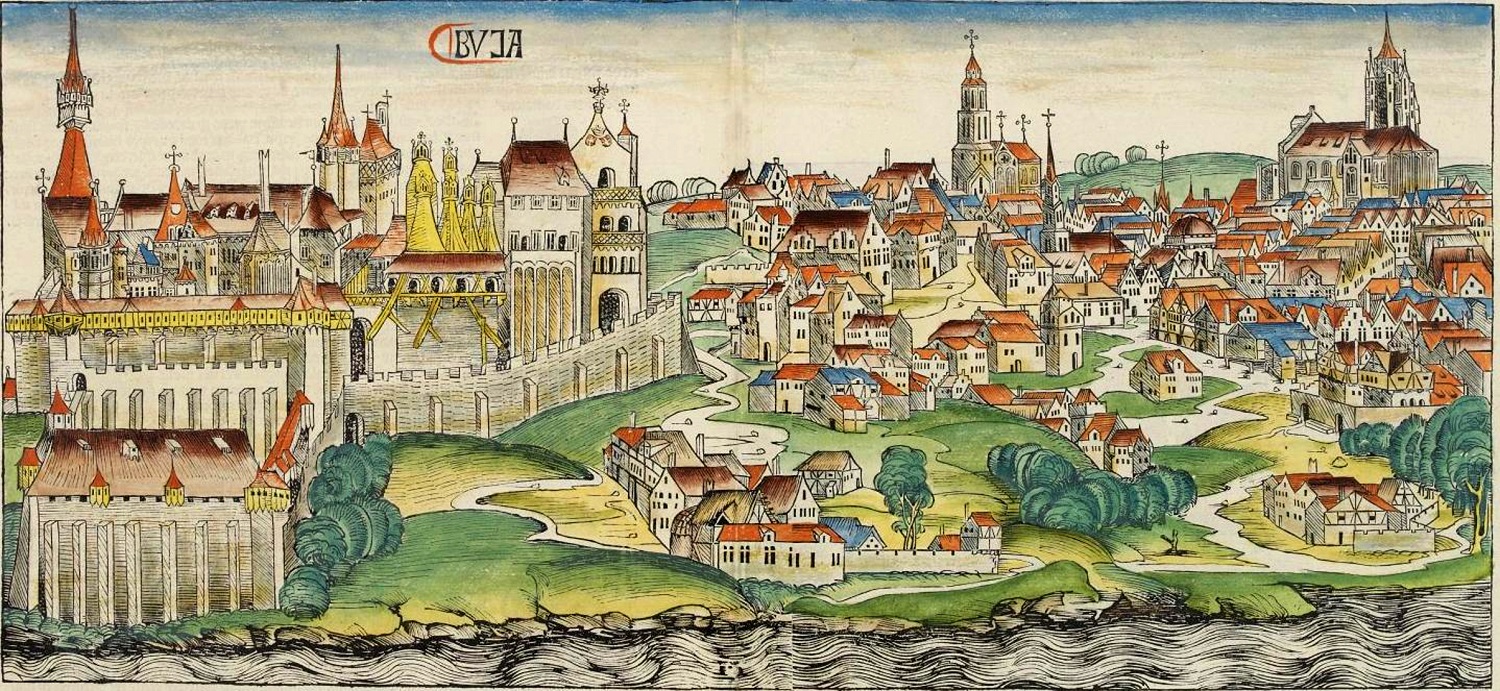
The image in the Nuremberg Chronicle from 1493 shows the curtain wall in the bottom left, connected to the river-wall at a right angle.
However, the environment of the southern curtain wall has changed significantly over time. The area was part of the fortifications of Buda Castle in the Middle Ages. In the Ottoman Era, various houses, cannon workshops and warehouses stood here. After the liberation of Buda, the fortress increasingly became a park: Palatine Joseph, who reigned from 1795 until his death in 1847 (and who converted Margit Island into a park), had several plants planted in the area, noted Borbála Czakó.
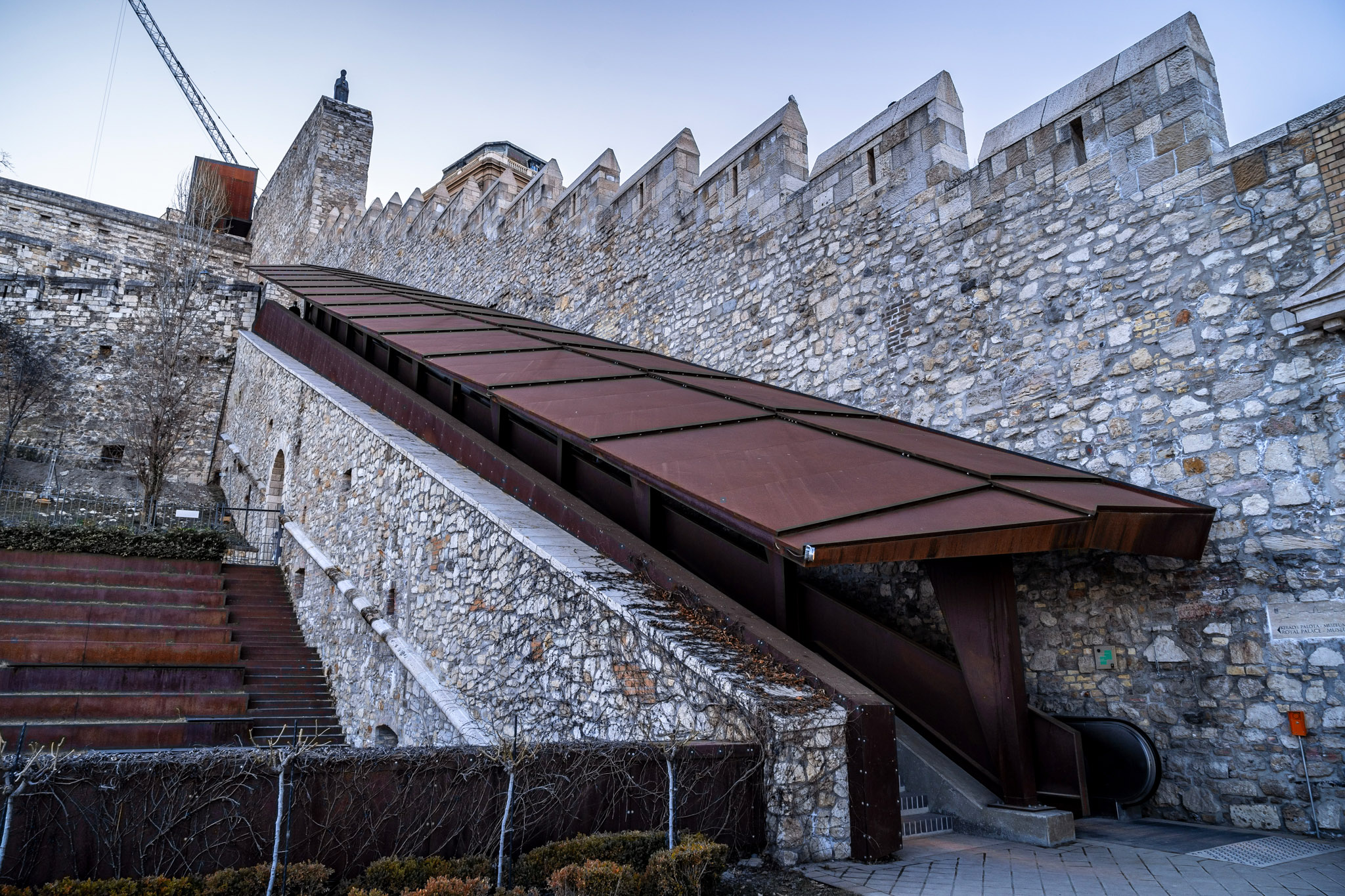 The medieval curtain wall, next to it the steel staircase built during the renovation of the Castle Garden Bazaar between 2012–2014 (Photo: Balázs Both/pestbuda.hu)
The medieval curtain wall, next to it the steel staircase built during the renovation of the Castle Garden Bazaar between 2012–2014 (Photo: Balázs Both/pestbuda.hu)
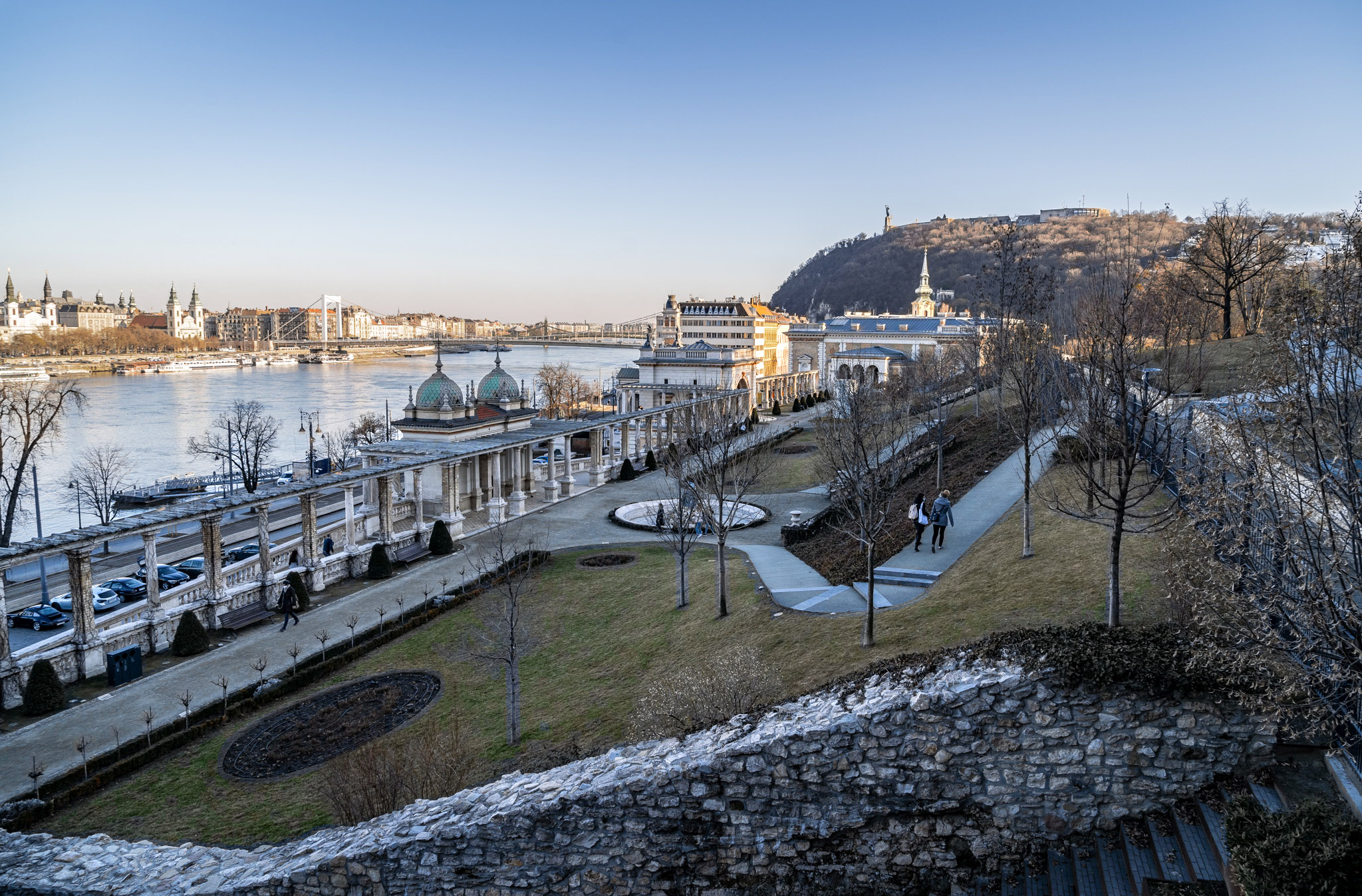 View from the curtain wall in the early spring, below the Neo-Renaissance garden of the Castle Garden Bazaar (Photo: Balázs Both/pestbuda.hu)
View from the curtain wall in the early spring, below the Neo-Renaissance garden of the Castle Garden Bazaar (Photo: Balázs Both/pestbuda.hu)
looking over the Neo-Renaissance garden of the Castle Garden Bazaar from the Southern Curtain Wall, memories of the palatine's times can be seen. Over 300 types of roses were planted in the garden during the renovation in memory of the roses planted here by the Palatine. The garden was also known for its orchids and azaleas, which grew in greenhouses. Between the two world wars, the Royal Gardeners built a respectable professional reputation, according to Borbála Czakó.
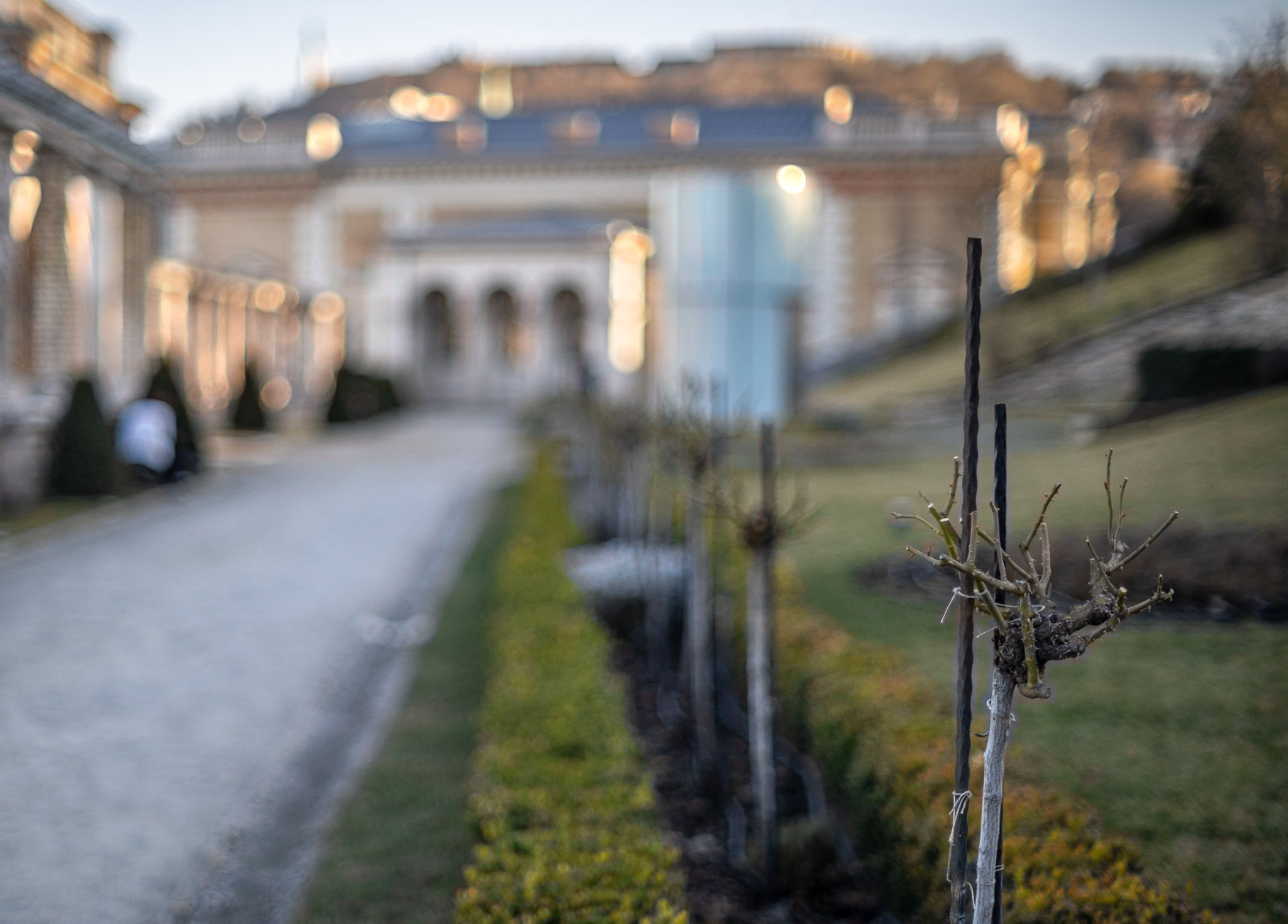 The roses are beautifully pruned, patiently waiting for better weather (Photo: Balázs Both/pestbuda.hu)
The roses are beautifully pruned, patiently waiting for better weather (Photo: Balázs Both/pestbuda.hu)
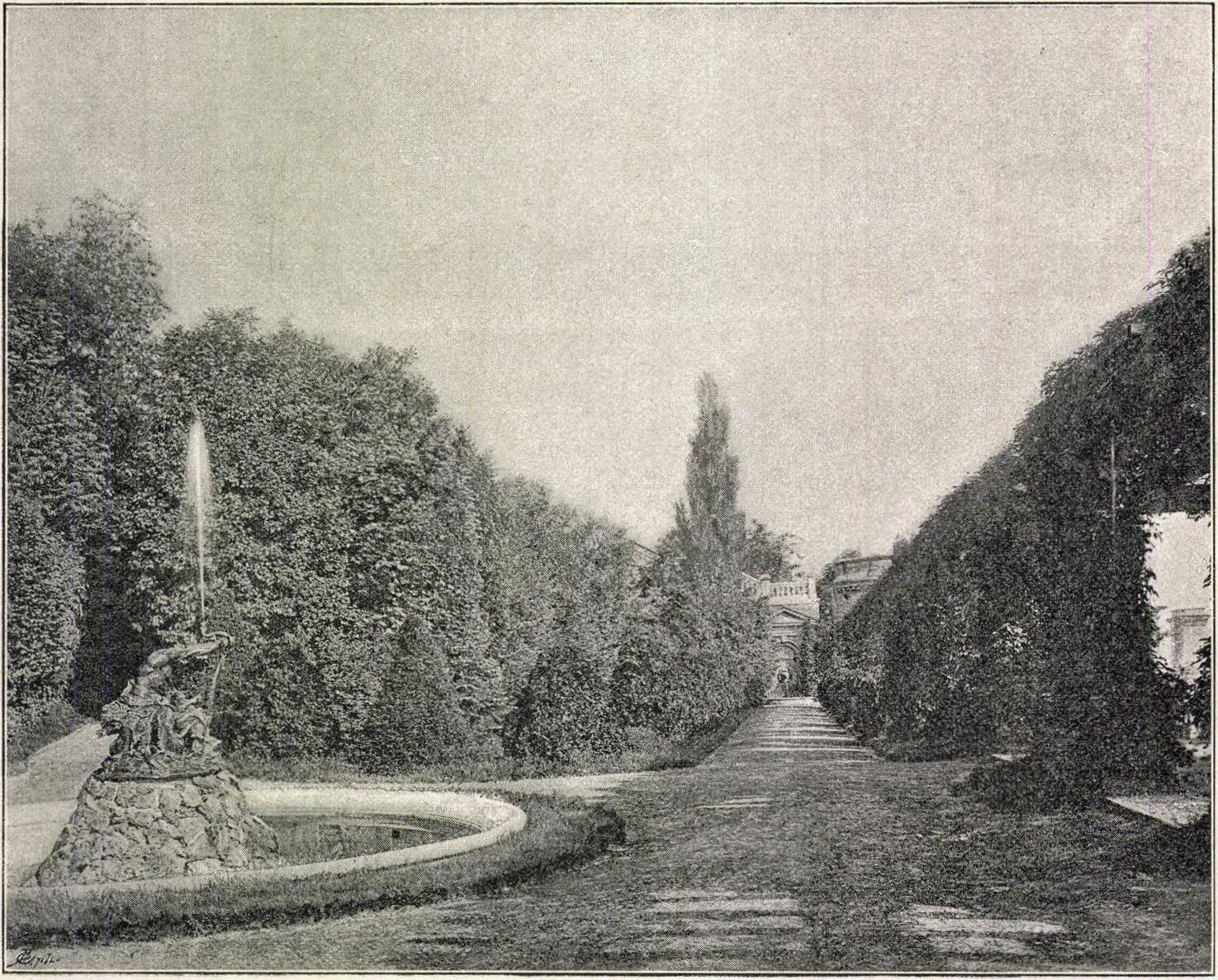
Detail of the “lower-garden” of the Royal Gardens, today's Neo-Renaissance Garden with the Triton Fountain built in the last decade of the 1800s (Photo: Magyar Szalon, July 1893)
A round fountain adorned with two struggling figures stands in the middle of the garden: the larger is the fountain's namesake, Triton, who in Greek mythology is the son of the sea god Poseidon, the father of mermaids. The fish-tailed Triton of the fountain raises his arm threateningly over the child-shaped figure lying in his lap, who is none other than Cupid, the god of love. The scene depicts the story in which Triton blames Cupid for his mermaid daughter falling in love with a man. Interestingly – adds Borbála Czakó – the original fountain only stood in the Castle Garden until 1898, after which a flower garden was created in its place. Attila Csák, a graphic artist, sculptor and restorer, recreated the statue based on two old photographs.
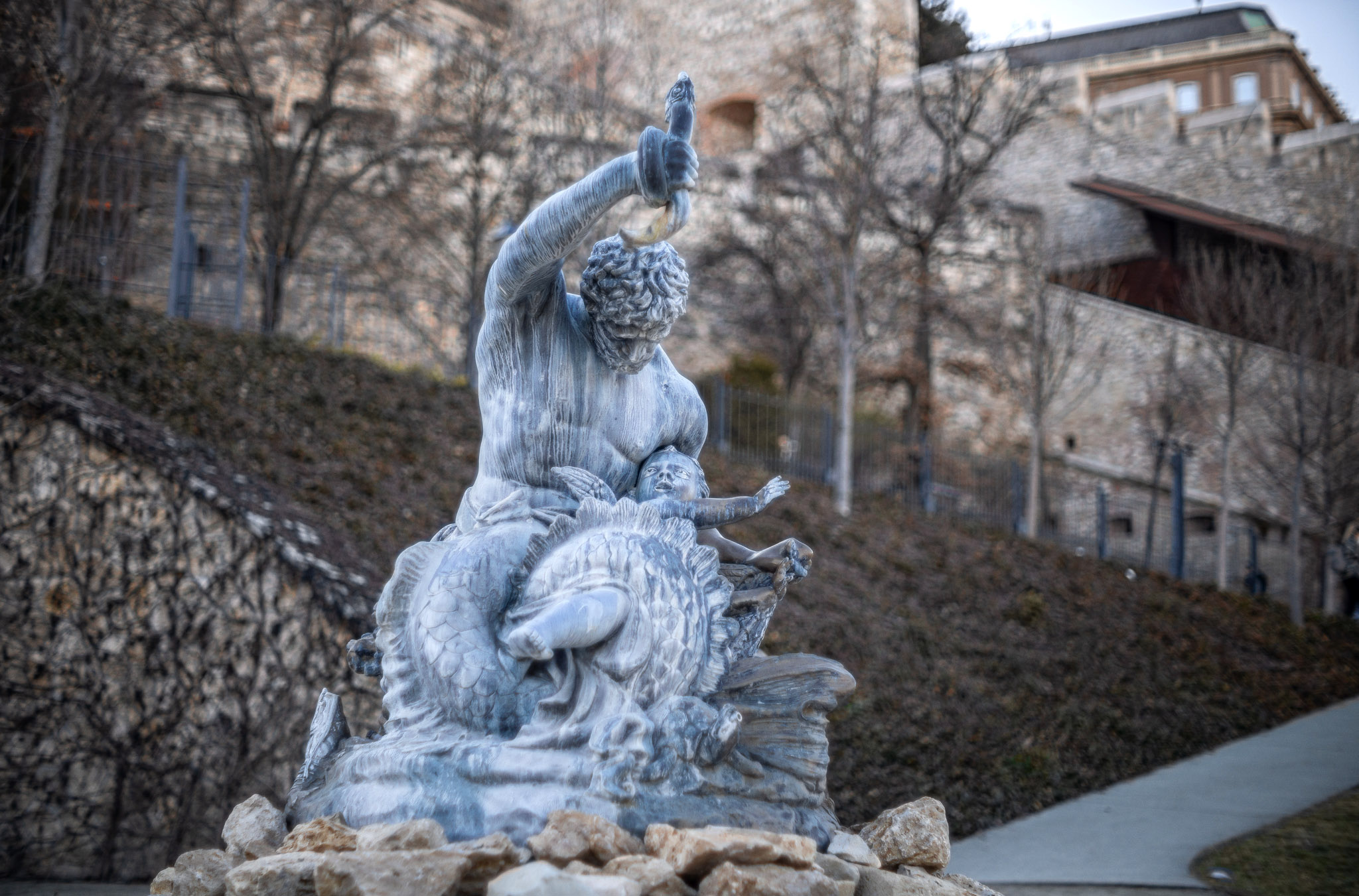
Triton was re-created based on two archive photographs. The fountain depicts the figures of Greek mythology, the sea god Triton and Cupid, the god of love (Photo: Balázs Both/ pestbuda.hu)
Looking at today’s Neo-Renaissance garden, it’s easy to imagine how amazing the Royal Palace's surroundings must have been in the early 1900s when a cohesive system of gardens surrounded it. The Castle Garden Bazaar was part of the royal residence, meaning the general public could not visit it at any time, although it was open on weekends. This is how Antal Szerb wrote of it in his book A guide to Budapest for Martians:
“When I was little, one could go into the Castle Garden on Sunday mornings. I was always shaken during these visits; I felt as if the king himself was hosting us, his children. The during the two terrible, apocalyptic months of our history, they wrote above the gate: Everything is ours. That is, nothing belongs to anyone. The whole city was thrown to the dogs. Not that this matters today. The only good thing was that you could go into the Castle Garden at any time of the day. We went in and were there all day. There was no socialist production in the garden. The trees produced, on a strictly individual basis, fragrances reminiscent of the palatine. ”
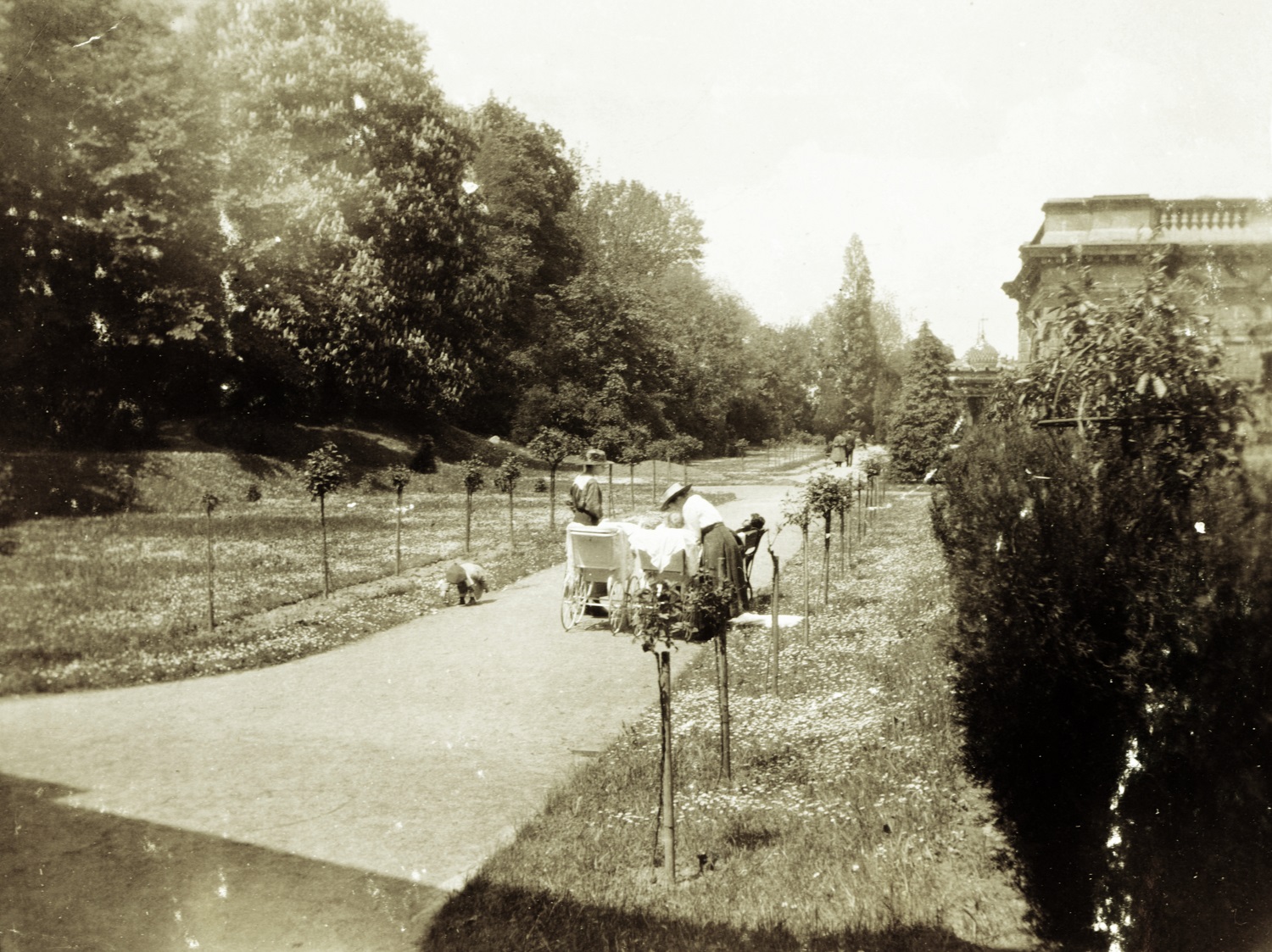
Detail of the "lower-garden" of the Royal Garden, today's Neo-Renaissance Garden in 1923 (Photo: Fortepan/No.: 85264)
Later the Royal Garden again functioned as a closed private garden between the two world wars, becoming a venue for representational events and garden parties – until World War II brought the old world to an end.
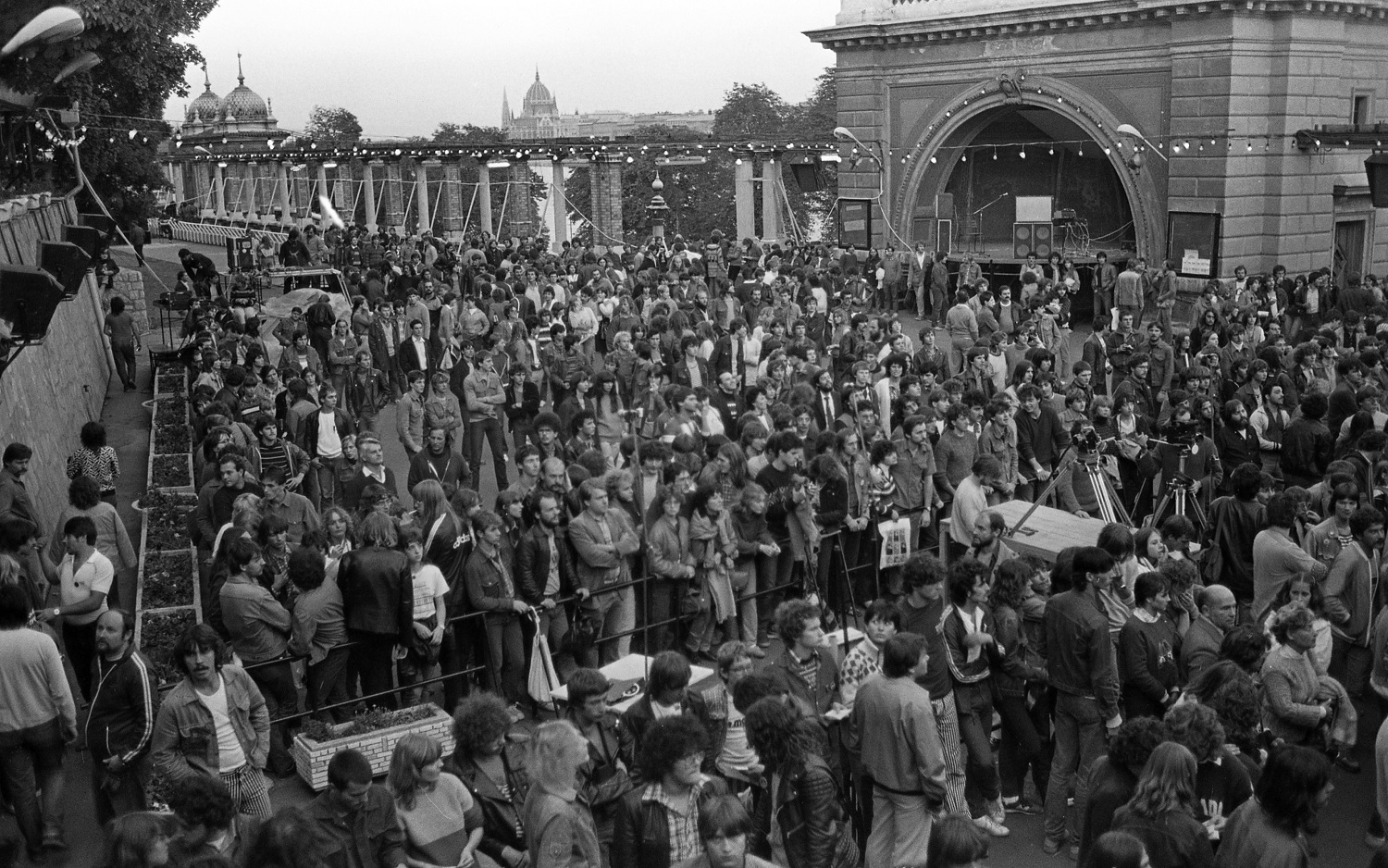
Concert in Ifipark: the auditorium on the site of today's Neo-Renaissance garden in 1984 (Photo: Fortepan/No.:125544)
The Ifipark (Buda Youth Park) operated on the site of the once beautiful garden in the summer months from 1961. The popular venue was the only outdoor entertainment venue for youths in the city at the time. It was extremely popular. More than 7,000 tickets were sold for an Omega concert and 10,000 for the 1978 joint P. Mobil – Pyramid concert. What was good for entertainment, however, was harmful to the Castle Garden Bazaar. Miklós Ybl's already neglected work was extremely worn by overuse, and during the Edda concert on 27 May 1980, the walls of the stairs leading to the park entrance collapsed, injuring five guests. The venue was finally closed in 1984 and remained closed until the reopening of the Castle Garden Bazaar in 2014.
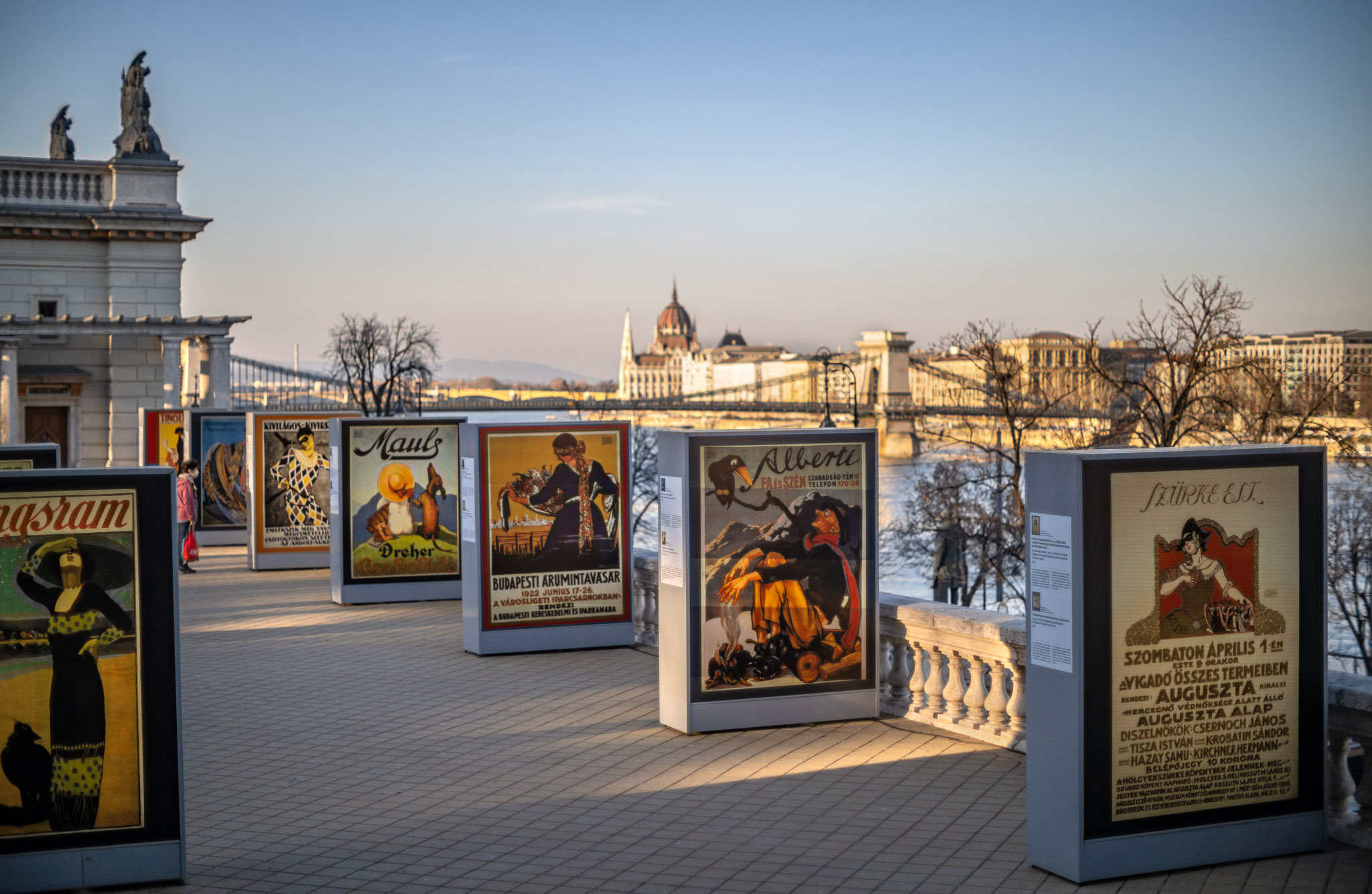
The turn-of-the-century posters evoke the atmosphere of the early 1900s on the southern panorama terrace. The collection, on display since 1 March, can be viewed free of charge until 30 June (Photo: Balázs Both/pestbuda.hu)
However, since the renovation, the former Royal Park has once again been open to everyone. Allowing residents and visitors to enjoy the elegant gardens, a stunning view of Budapest and a slew of exciting events – when pandemics don't disrupt the calendar. But there is something else to see in the Neo-Renaissance garden: on the south panorama terrace of the Bazaar, a collection of posters from the turn of the century are on display.
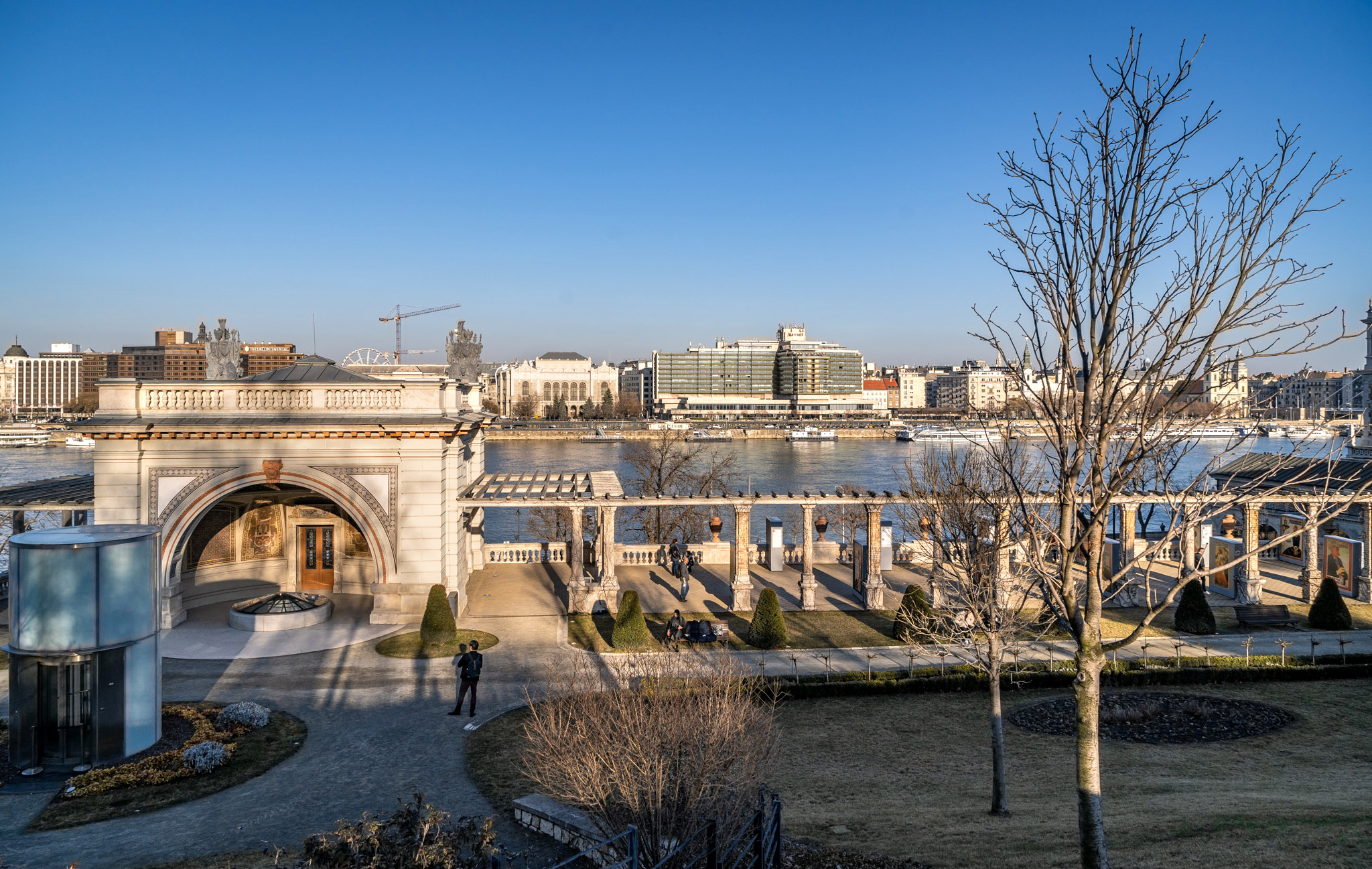
The Castle Garden Bazaar is beautiful in itself, and the view unforgettable (Photo: Balázs Both/pestbuda.hu)
Cover photo: Neo-Renaissance garden of the Castle Garden Bazaar, in the background the churches of Gellert Hill, Erzsébet Bridge and Pest (Photo: Balázs Both/pestbuda.hu)

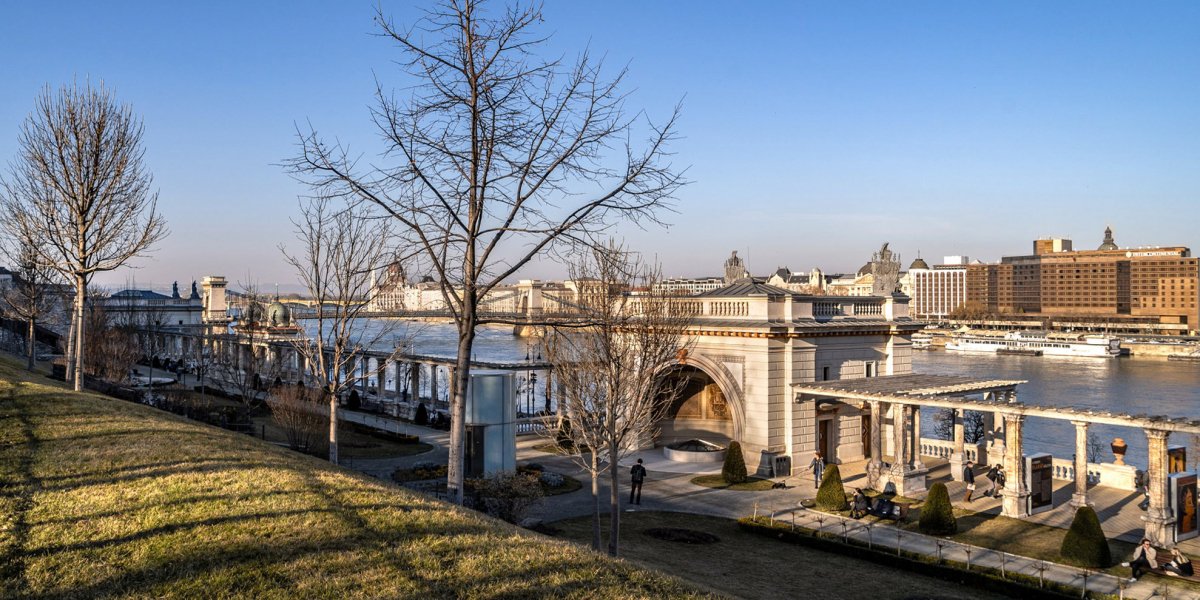



































Hozzászólások
Log in or register to comment!
Login Registration